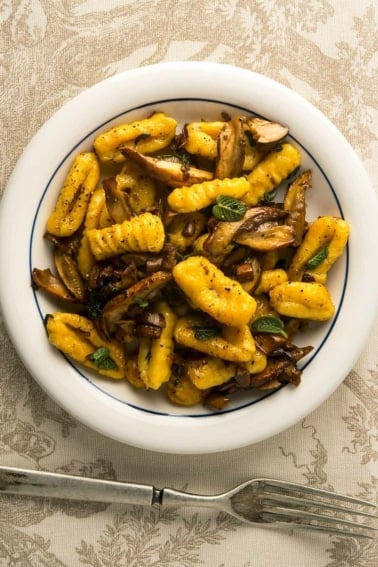As an Amazon Associate I earn from qualifying purchases.

Tuna crudo is an Italian take on sashimi, although there is a long tradition of eating raw fish in the Mediterranean.
There’s not much to this recipe, just pristine slices of tuna or some similar fish, olive oil, lemon and maybe capers and some fresh herbs. Good, flaky sea salt is nice, too.
You want to keep it simple, as tuna crudo is intended to start a meal, not be a meal in itself. It falls somewhere between amuse bouche and appetizer.
Like most Italian food, everything hinges on quality. Amazing fish, deftly sliced, with the best olive oil you can afford, freshly squeezed lemons, really nice flaked salt, and in this case, the smallest capers you can find.
Let’s start with the fish. Buy sushi grade tuna, or any other firm fish you can slice easily. Other great options are amberjack, yellowtail, almaco jack, Spanish mackerel, wahoo and dorado. Keep in mind all of these non-tuna species can potentially carry anisakis parasites, which will make you sick. It is very rare in these fish, however.
You can go beyond these choices if you have pre-frozen your fish to kill any potential parasites. That means one week at -4°F, which is about how cold even modern freezers get. You can go shorter, but you’d need some way to chill the fish to -31°F and I don’t think anything you can buy retail gets that cold.
But if you do use thawed fish, the sky is the limit. It opens you up for salmon, any freshwater fish, as well as things like bluefish, snapper or sablefish.
As for the oil, I prefer the spicy green olive oils, but the rich, buttery, late-season oils are almost as good. Always use fresh lemons. Period, end of story. And for the salt, the flake salt that is easiest to buy is Maldon salt, which can be bought online or in many supermarkets. Why use it? You want that hit of salty crunch. It contrasts well with the soft fish.
That’s really all you need to know to make a great tuna crudo. Enjoy!
Interested in exploring a similar dish from Mexico? Consider Mexican aguachile.
Tuna Crudo
Ingredients
- 1/2 pound sushi grade tuna
- 1/4 cup extra-virgin olive oil
- Juice and zest of a lemon
- Sea salt
- 1 tablespoon capers
Instructions
- Slice the tuna thin, but not too thin. Shoot for about 1/4 inch thick. A tip on cutting cleanly: Draw your (very sharp) knife back towards you to cut, so you only slice in one direction. Sawing through fish makes it raggedy.
- Arrange the fish on a plate or plates, and distribute the oil, lemon juice, capers, salt and lemon zest around it. Serve immediately,
Notes
Nutrition
Nutrition information is automatically calculated, so should only be used as an approximation.





I was looking for a tuna crudo recipe. This is excellent!
Now that I’ve found your site, I look forward to trying other goodies.
Hello Hank,
I grow a lot of epazote
which part of the plant is edible?
leave or sprouty seeds at the top of the stem?
Some say it should be dried not fresh, what do you think?
thanks,
Zil
E: I’m not sure why you are asking me this on this recipe, since there is no epazote in it. But I use leaves, fresh or dried.
Do you put the oo/lemon/capers on or around the fish?
Tim: On the fish. Lemon juice right as you serve.
Great post. Can you talk about why Spanish Mackerel is safe without freezing? In an earlier post on ceviche, I thought you listed mackerel as requiring freezing first. Thanks!
Krystal: Good point. I updated the post to reflect that while very rare in these species, it is possible to get anisakis poisoning from unfrozen jacks.
Thanks! We’ve been eating Spanish Mackerel ceviche without freezing for years so good to have all the facts.
Hi Hank,
I enjoy you recipes.
FYI, tuna does not have to be frozen prior to consuming raw or under cooked and per the FDA’s food code. Raw tuna is not know to transfer parasites to humans. However, you are correct the FDA does recommend freezing of wild non tuna species. Farm raised species, such as Atlantic Salmon, do not have to be frozen prior to consumption in a raw or under cooked preparation.due to the feed production process.
I do agree that one should start with a pristine cut of fish purchased from your favorite reliable fish monger.
Thanks,
Joe